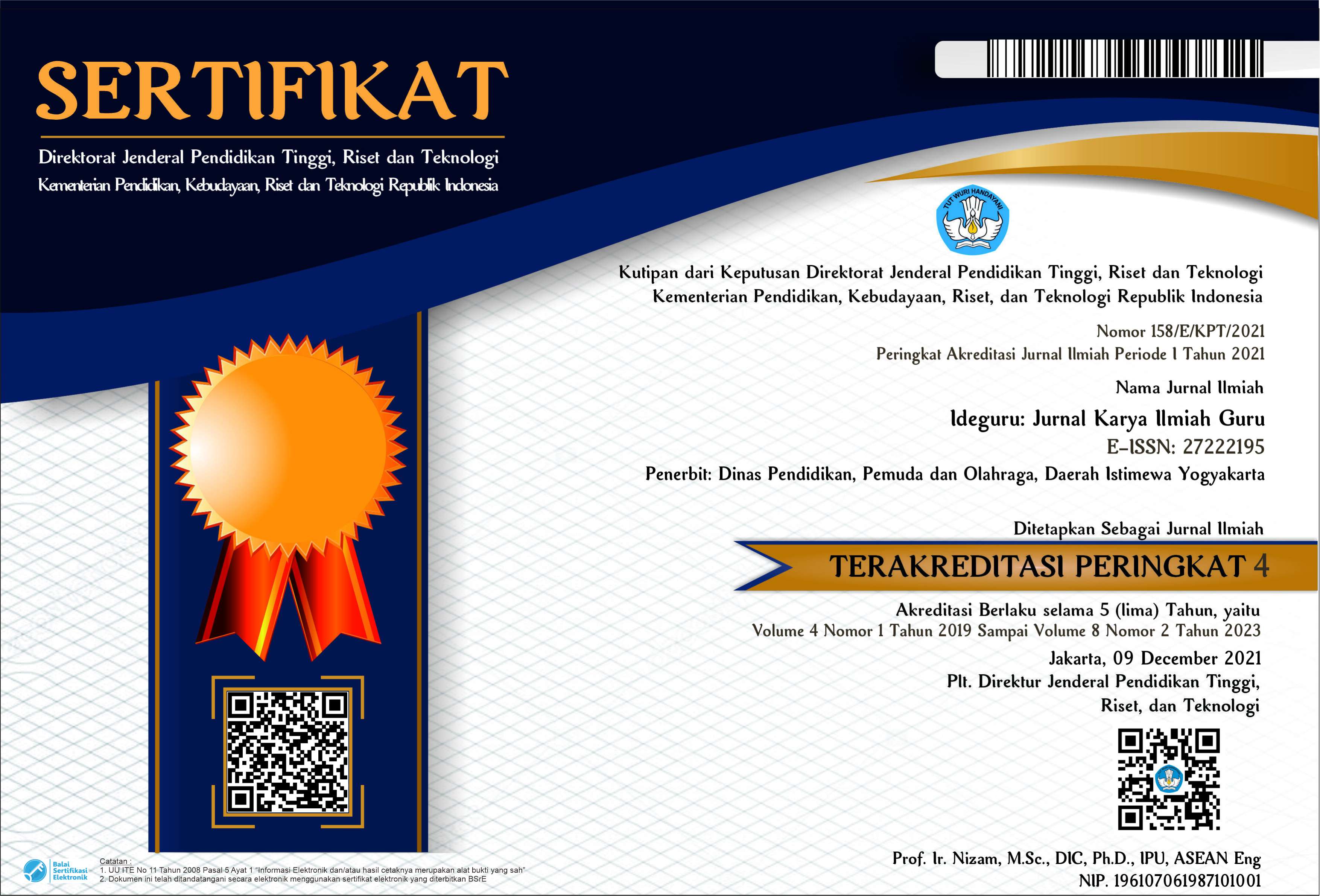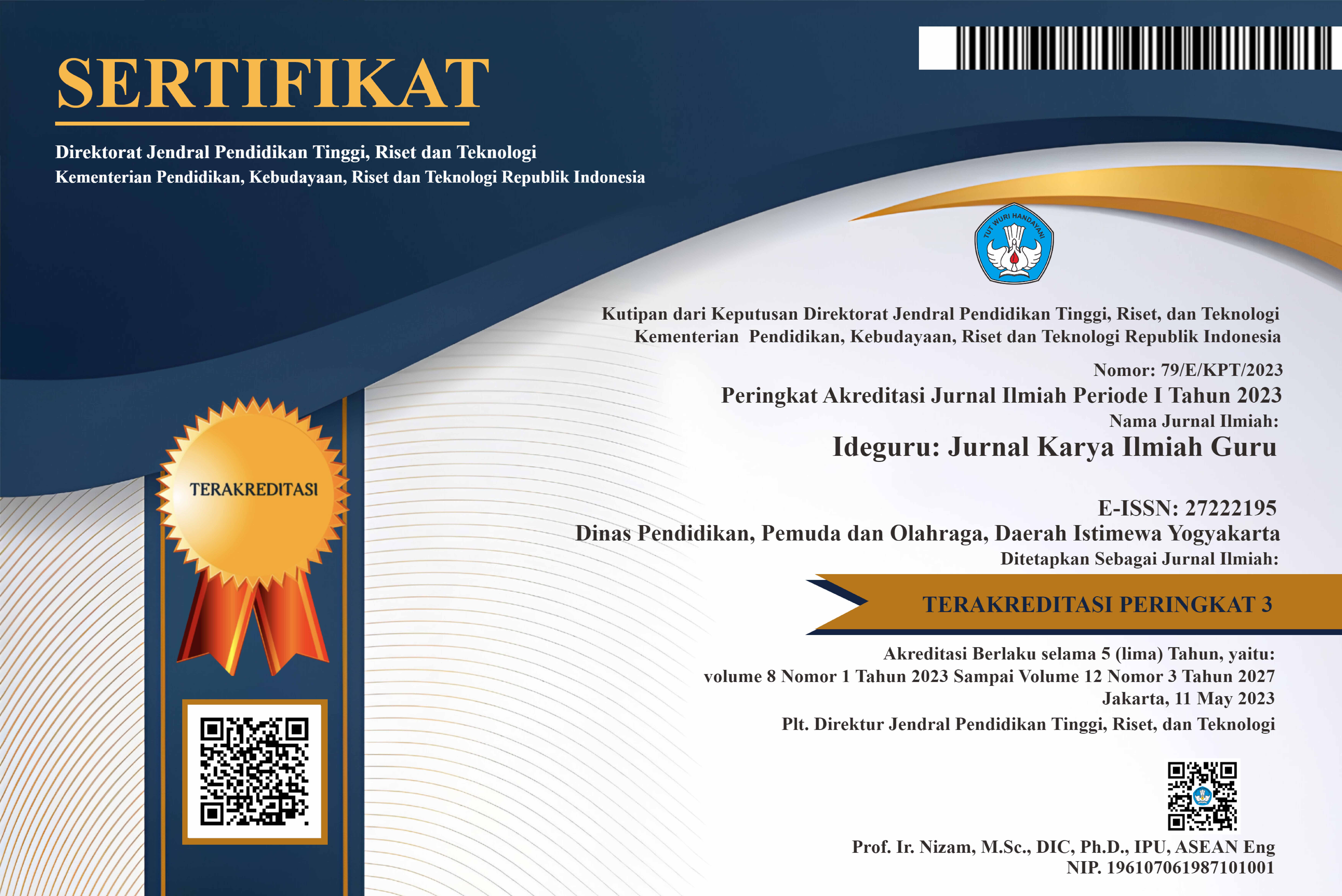Peningkatan Keterampilan Berpikir Kritis, Berkomunikasi, Berkolaborasi, dan Kreativitas pada Matriks melalui Kriptografi Menggunakan PjBL-STEM
Abstrak
Pendampingan dalam pembelajaran membantu peserta didik mencapai hasil di sekolah maupun transfer hasil belajar ke situasi baru dalam kehidupan. Untuk dapat hidup kompetitif mereka membutuhkan penguasaan keterampilan berpikir kritis, berkomunikasi, berkolaborasi, dan kreativitas atau 4C. Tujuan dilaksanakan penelitian tindakan kelas ini untuk mengetahui model PjBL-STEM melalui penerapan Kriptografi pada Matriks dapat meningkatkan keterampilan 4C peserta didik di SMA Negeri 8 Yogyakarta. Pelaksanaan penelitian dalam dua siklus masing-masing terdiri atas perencanaan, tindakan, pengamatan, dan refleksi menggunakan tahapan PjBL-STEM yaitu reflection, research, discovery, application, dan communication. Matriks digunakan dalam proses enkripsi maupun dekripsi. Rerata skor keterampilan 4C peserta didik pada siklus I 31,88 menjadi 35,2 pada siklus II dari skor maksimum 36. Penelitian ini juga menghasilkan data peningkatan rerata capaian LKPD kelompok dan individu yaitu 88,85 dan 96 pada siklus I serta siklus II adalah 98,88 dan 99,03. Rerata capaian Ulangan Harian maupun ketuntasan klasikal berturut-turut dari 86,10 dan 91,67% pada siklus I menjadi 91,11 dan 100% pada siklus II. Kenaikan rerata persentase pelaksanaan proses pembelajaran oleh pendidik maupun peserta didik pada siklus I masing-masing adalah 96% menjadi 100 % pada siklus II. Rerata capaian nilai produk program “Keamanan Informasi Sensitif” 88,61 dan poster 84,22. Rerata capaian dalam pembuatan laporan 87,65. Hasil penelitian menunjukkan PjBL-STEM dapat digunakan untuk meningkatkan keterampilan 4C peserta didik.
Data Unduhan PDF
Copyright (c) 2023 Suyanto

This work is licensed under a Creative Commons Attribution 4.0 International License.

 DOI:
DOI:














